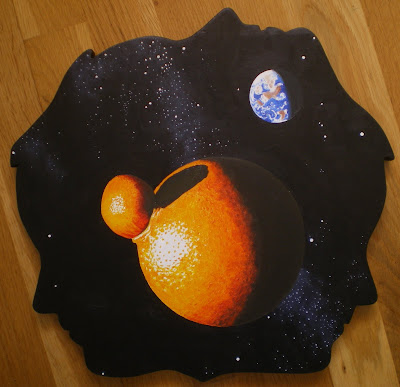Sometimes strange coincidences happen: twice in the same day or within two or three days, from two diferent, unrelated sources I come upon some curious peace of information that I completely ignored so far. For instance, I may read something interesting on a book, and shortly after see it mentioned again on a documentary on tv. I guess this kind of coincidences were first described by Karl Gustav Jung, who called them
Synchronicity .
In the begining of May, while I was reading the article by Jonathan Franzen on the April 18 issue of "The New Yorker" magazine, "Farther away, Robinson Crusoe, David Foster Wallace, and the island of solitude", I experienced my lattest two cases of synchronicity. The writer begins by describing the trip he made last January to an isolated island off the coast of Chile, Masafuera, also known by the name of
Alejandro Selkirk, after an eighteenth-century Scottish adventurer who lived there alone for four years. His story probabily inspired Daniel Defoe to write "Robinson Crusoe", "...the book generaly considered to be the first English novel".
Just two or three days before, I had seen an episode of
"Full Circle with Michael Palin" on BBC Prime where Palin shows his trip to the exact same island. Then I had learned for the first time about this island, about Alexander Selkirk, and how his story probabily inspired Daniel Defoe to write "Robinson Crusoe".
On the night of Monday, 9, I read, on the same article: ""...David, (David Foster Wallace, a fellow writer and friend of Franzen, who had commited suicide in 2008) whose vocabulary was as large as anybody´s in the Western Hemisphere, took a deep breath and letting it out, said, "I´m suddenly realizing that I´ve never actually known what the word ´paragon` means."" Franzen was describing a funny and embaracing story.
Though I had some clue, I decided to look for the exact meaning of that word the next day, and then went to sleep. Next thursday the word paragon never entered my mind again until in the afternoon, when I was watching the movie "Stranger than Fiction", that a colegue of mine had rented. There is a scene, filmed in a swimming-pool, showing Dustin Hoffman sitting in a bench whose brand, writen in words so big you cannot miss them, is PARAGON.

